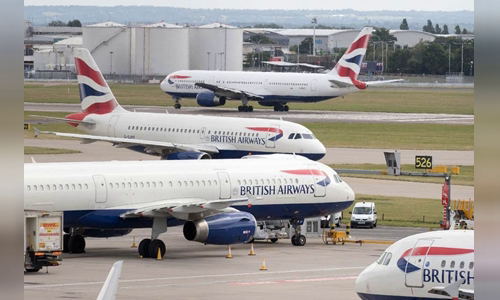Roger Tyers boarded 24 trains, across 9 countries, over 21,700 km from England to China because he did not want to use the plane.
Tyers, 37, took a month on a train for more than $ 2,500, nearly three times the price of a round-trip flight, to travel from Southampton, England to Ning Ba, eastern China, making one academic research in May.

Roger Tyers takes a train from England to China to change planes Photo: CNN
He made this choice not because he liked the train, but the climate crisis was the reason why the socialist chose the harder route to travel instead of a flight. Tyers said he felt the need to stop using the plane when United Nations climate experts last year warned that the world was less than 11 years old to avoid global warming becoming catastrophic. .
Tyers are not the only ones to abandon aircraft to cope with climate change. Thousands of people around the world have publicly announced their cessation of flight, including 16-year-old environmental activist Greta Thunberg, who has inspired youth protests across the country.
They say there is no reason to use the plane when governments have declared a climate emergency and scientists have warned about the dangerous effects of global warming on health. of humans and the future of countless creatures.
Activist Maja Rosen launched the "Flight Free" campaign in Sweden in 2018 with the goal of encouraging 100,000 people to stop flying in a year. Although only about 14,000 people signed the "# flightfree2019" online commitment, Rosen says the campaign has helped more people become aware of the urgency of the climate crisis and urged them to take the train more.
The campaign created a wave on social media, where people posted photos showing they were taking a train with the words "flying is shameful" and "proudly sailing" in Swedish.
According to a survey published in May by Swedish railway company SJ, 37% of respondents chose to take a train instead of an airplane when possible, up 17% from the beginning of 2018.
"The number of train people is increasing due to climate concerns," a spokesman for SJ said. Swedavia, which operates 10 of Sweden's busiest airports, said the number of domestic passengers in July was down 12% from last year.
Rosen, who stopped flying 12 years ago, said the # flightfree2019 commitment has given more people confidence when they felt hopeless before the fight against climate change.
"One of the problems is that people feel that an individual is acting meaninglessly. This campaign is to help people realize that if we do it together, we can really create big difference, "she said.

British Airways airplanes at Heathrow Airport, London Photo: PA
The emissions of a passenger traveling on a plane depend on many factors, including the distance they fly, the amount of passengers on the plane, and the flight class they use. Business class passengers take up more space than regular class passengers, meaning they are responsible for greater aircraft emissions.
Emissions from ships also depend on many factors, including how the ship operates. For example, clean electric trains have much lower emissions than diesel trains.
Tyers calculated that his train to China generates about 90% less emissions than a round-trip flight. "It's hard to know how polluting planes are and how much fuel they use to send people to the air, across the planet," he said.
The aviation industry accounts for 2% of man-made CO2 emissions. By 2050, if nothing changes, this number is expected to increase to 22%. A round-trip passenger from London to New York produces about the same amount of CO2 as a person in the European Union heating homes for a year, according to the European Commission.
According to the Grantham Research Institute on Climate Change, many airlines are indifferent to reducing emissions and it's unclear what their long-term strategy is. The International Air Transport Association (IATA), a commercial organization of 290 airlines, has set a goal of halving emissions by 2050 compared to 2005.
"This is a difficult task as the industry is still growing but we are confident it will be achieved," an IATA spokeswoman said.
The association said the aviation industry intends to apply a combination of measures, including the use of sustainable fuels and new technologies such as aircraft that combine both internal combustion engines and electric engines, electric aircraft, to cut reduce emissions.
Most of these measures require significant technological advances. Electric batteries currently cannot afford to power long-haul aircraft, according to David Romps, a professor of climate science, Berkeley University of California, USA.
Meanwhile, ships can reduce their carbon footprint by running on electricity and using clean energy. "If you really want to make a change in the right direction, support industries that have the potential to be part of the solution," says Romps.



 JeffGray
JeffGray








